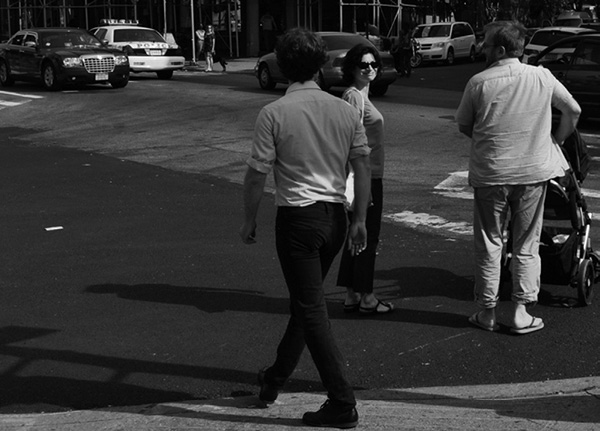
SPONTANEOUS SOCIETY
first performed on
June 9, 2011
Upper West Side, New York, NY
performed ten times in 2011
JON COTNER
New York, NY
404425602j404425602o404425602n404425602.404425602c404425602o404425602t404425602n404425602e404425602r404425602@404425602g404425602m404425602a404425602i404425602l404425602.404425602c404425602o404425602m
elastic-city.com/walks/spontaneous-society-ev
SPONTANEOUS SOCIETY
JON COTNER
“That’s a good-looking dog.” (said to someone approaching with a dog)
“That’s a good-looking duo.” (said to someone approaching with two dogs)
“That’s a good-looking wolfpack.” (said to someone approaching with three or more dogs-surprisingly common in New York)
“That looks pretty cozy.” (said to someone pushing a baby carriage)
“That’s a good pace.” (said to someone jogging past)
“It’s a good day for a ride.” (said to someone biking past)
“It’s a good day for a picnic.” (said to someone eating on a bench, blanket, or doorstep)
“That looks like a nice spot for a text.” (said to someone reading or typing a message)
“That’s a good parking-spot.” (said to someone parking a car)
“They say carrying bags is good exercise.” (said to someone holding heavy bags)
“That looks like a handy cart.” (said to someone pushing a handcart, whether or not it’s full)
These lines-and the rest making up “Spontaneous Society,” a 90-minute interactive walk I lead through New York-are 99% effective in terms of replacing urban anonymity with affection. I’ve tested each line thousands of times over thousands of blocks across multiple cities. Adults, kids, even non-human animals respond to the lines. Last summer, for example, I told a man with a white parakeet on his finger: “That’s a good-looking bird.” The bird smiled then smoothed its feathers. It said “Good evening.”
“Spontaneous Society” has the humble social aim of intensifying pleasure within the flow of daily life. We’re in a tough spot right now-environmentally, economically, you name it. Congress can’t function. Anger and fear are pervasive.
One way to address these widespread problems is by addressing each other with kindness in the mundane world. At least this much is up to us. Sadly the other problems could be out of our hands.
By the end of the walk, once trying out my lines, participants will improvise their own. Everyone starts to sense the power lurking inside basic affirmative utterances, not to mention the joy, as Frank O’Hara says, of putting the poem “between two persons instead of two pages.”
“Spontaneous Society” provides a communication primer: a lesson in humane discourse bridging races, ages, classes; a reminder that the present, barring violence, is to be celebrated before it vanishes into nothingness.